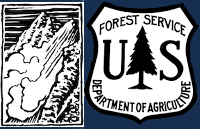Snowpack and Avalanche Discussion
<p><span><span><span><strong><span><span>Persistent Slab avalanches</span></span></strong></span></span></span><span><span><span><span><span><span> breaking 2-3 ft deep on weak layers buried in late January remain the primary concern. There was a close call in Cabin Creek yesterday. Snowmobilers triggered a good size slide, but fortunately managed to avoid being buried (</span></span></span></span></span></span><a href="https://www.mtavalanche.com/node/34413"><span><span><span><span><span><…;). This slide seems to follow the pattern that has emerged from the steady stream of slides triggered over the last 10 days - breaking on mid-elevation slopes sheltered from the wind where you might think conditions are safer, but they are not (</span></span></span></span></span></span><a href="https://www.mtavalanche.com/node/34368"><span><span><span><span><span><… in Cooke</span></span></u></span></span></span></span></span></a><span><span><span><span><span><span>, </span></span></span></span></span></span><a href="https://www.mtavalanche.com/node/34341"><span><span><span><span><span><… in Tepee Basin</span></span></u></span></span></span></span></span></a><span><span><span><span><span><span>, </span></span></span></span></span></span><a href="https://www.mtavalanche.com/node/34367"><span><span><span><span><span><… in Cooke</span></span></u></span></span></span></span></span></a><span><span><span><span><span><span>, </span></span></span></span></span></span><a href="https://www.mtavalanche.com/node/34301"><span><span><span><span><span><… in Tepee Basin</span></span></u></span></span></span></span></span></a><span><span><span><span><span><span>, </span></span></span></span></span></span><a href="https://www.mtavalanche.com/node/34327"><span><span><span><span><span><… in Taylor Fork</span></span></u></span></span></span></span></span></a><span><span><span><span><span><span>, </span></span></span></span></span></span><a href="https://www.youtube.com/watch?v=tAiSHSEDJhY"><span><span><span><span><s… last Wednesday</span></span></u></span></span></span></span></span></a><span><span><span><span><span><span>).</span></span></span></span></span></span></p>
<p><span><span><span><span><span><span>Triggering large slides clearly remains possible, but the likelihood of triggering a slide on any particular slope isn’t super high. Not every slope harbors the worrisome weak layers and they aren’t reactive on every slope where they are present. This makes for tricky travel advice. </span></span></span></span></span></span></p>
<p><span><span><span><span><span><span>As I see you have three options today - </span></span></span></span></span></span></p>
<ol>
<li><span><span><span><span><span><span>Guess which slopes are safe, cross your fingers and hope for the best. </span></span></span></span></span></span></li>
<li><span><span><span><span><span><span>Continue to avoid slopes steeper than 30 degrees. </span></span></span></span></span></span></li>
<li><span><span><span><span><span><span>Dig down a bit below the dirt layer buried in early February and assess the weak layer (</span></span></span></span></span></span><a href="https://www.youtube.com/watch?v=q0IGs0dKpQU"><span><span><span><span><s…’s video shows how to do this</span></span></u></span></span></span></span></span></a><span><span><span><span><span><span>)</span></span></span></span></span></span></li>
</ol>
<p><span><span><span><span><span><span>Option 1 isn’t a great plan, but either of the other two are reasonable and could lead to a great day enjoying the beautiful weather and good snow that is still out there.</span></span></span></span></span></span></p>
<p><span><span><span><span><span><span>Wind Slabs that formed earlier this week will have generally bonded and will only be an isolated concern. With temperatures similar to yesterday and a good refreeze overnight, any wet snow concerns will be small and likely isolated to sunny slopes with exposed rocks this afternoon.</span></span></span></span></span></span></p>
<p><span><span><span><span><span><span>The avalanche danger is MODERATE around West Yellowstone and Cooke City.</span></span></span></span></span></span></p>
<p><span><span><span><span><span><span>The snowpack is generally stable and triggering a large avalanche is unlikely today. Still there are a couple things to watch out for - </span></span></span></span></span></span></p>
<p><span><span><span><span><span><span>Cornices have been breaking off with the warm temps (</span></span></span></span></span></span><a href="https://www.mtavalanche.com/node/34402"><span><span><span><span><span><… observation</span></span></u></span></span></span></span></span></a><span><span><span><span><span><span>). It’s hard to predict exactly when they’ll break and they often pull back surprisingly far. Be careful travelling on ridgelines above them, or crossing beneath. </span></span></span></span></span></span></p>
<p><span><span><span><span><span><span>There may also be some isolated wind slabs below that could still be triggered. Look out for these beneath ridgelines and cornices (</span></span></span></span></span></span><a href="https://www.mtavalanche.com/node/34402"><span><span><span><span><span><… from Hyalite</span></span></u></span></span></span></span></span></a><span><span><span><span><span><span>). </span></span></span></span></span></span></p>
<p><span><span><span><span><span><span>Watch out for wet snow at low elevations and on sunny slopes later this afternoon (</span></span></span></span></span></span><a href="https://www.mtavalanche.com/node/34408"><span><span><span><span><span><… of a Loose Wet avalanche onto the Portal Creek road</span></span></u></span></span></span></span></span></a><span><span><span><span><span><span>). With a forecast for similar high temperatures to yesterday and a solid refreeze this morning, I don’t expect these to be a widespread concern. Still, don’t let your guard down entirely. If temps rise higher than forecasted, Loose Wet avalanches will be more widespread and larger. </span></span></span></span></span></span></p>
<p><span><span><span><span><span><span>Despite these isolated concerns, avalanche conditions are generally safe and the avalanche danger is LOW.</span></span></span></span></span></span></p>
Upcoming Avalanche Education and Events
Our education calendar is full of awareness lectures and field courses. Check it out: Events and Education Calendar
